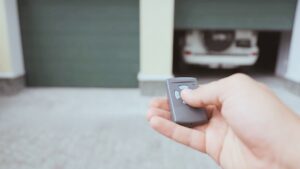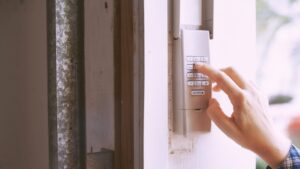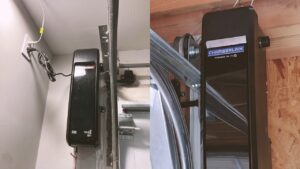Garage doors provide security to your house and belongings. These doors have safety sensors that prevent the door from accidentally closing and hurting someone or damaging your vehicle.
Sometimes, however, the sensors can stop working—preventing the door from functioning properly. In certain cases, malfunctioned sensors can prevent the door from closing, putting your belongings at risk.
As a homeowner, dealing with malfunctioning garage door sensors can be frustrating, particularly if you lack the expertise to fix or replace them. However, this guide is here to provide you with detailed instructions on how to bypass garage door sensors and restore your garage door’s functionality without needing a professional’s services.
Furthermore, to ensure that you never experience similar issues with your garage door sensors in the future, we’ve included a troubleshooting guide that will enable you to detect and fix any problems that may arise. This way, you can rest easy knowing that your garage door is always in excellent working condition.
Can You Use a Garage Door Opener Without Sensors?
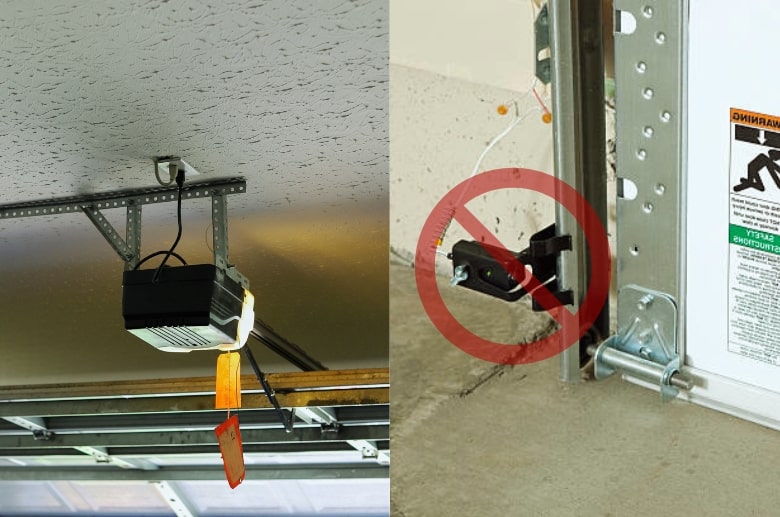
It’s not recommended to use your garage door without sensors, and doing so is not only dangerous but also a violation of the law. According to the United States Federal Law UL 325, all garage doors must include safety mechanisms such as photo eye sensors.
Without safety sensors, you put yourself and your loved ones at risk of serious injury. If your garage door doesn’t have sensors, it’ll close even if there’s something in the way. This is a bad idea, especially if you have little kids or pets playing around in your garage. That is why it is best to have a garage door opener with safety measures.
That is why it’s important to understand that bypassing garage door sensors is a temporary fix. Once you’ve got time, you should look into the problem and resolve it or hire a garage door technician.
Connect With A Garage Expert
Connect with local experts, Compare quotes, Get the best price.
How to Bypass Garage Door Sensors in 5 Easy Steps
You can bypass garage door sensors using different methods that we have explained below. Some of these methods are fairly simple and swift, but others are a bit tricky. You should only attempt the methods that you completely understand. If you’re unsure of a method, don’t use it lest you worsen the issue.
Now that the disclaimer is out of the way, let’s understand these methods one by one.
The Reflector Trick

The reflector trick is likely the easiest method among all the ways to bypass garage door sensors. This technique involves using a reflective surface to trick the sensors. Once the infrared light reaches the sensor, the garage door will begin functioning again. However, ensure no pets or children are around the door.
Here’s how to apply the reflector trick:
- Find a reflective surface can simply be a mirror, and it must be shiny and reflect light.
- Align the reflective surface with the sensors of your garage door.
- Hold it in front of the sensors.
- Activate your garage door by pressing the garage door opener. The infrared light from the sender sensor will reflect off the reflective surface and reach the receiving sensor (even if there is something in the path).
- The garage door will start closing. Once it’s fully closed, remove the reflective surface.
Using a Laser Point
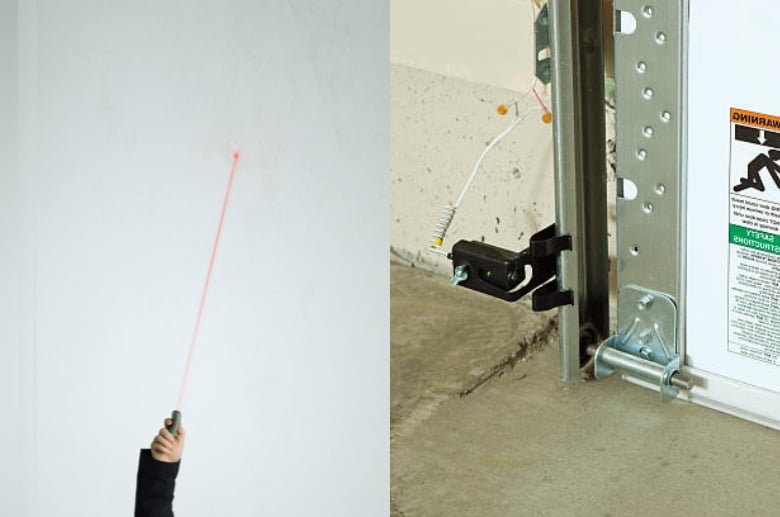
You can also use a laser to bypass garage door sensors and get your garage door working again. Here’s how:
- Find the receiving sensor (with the green indicator light). If both sensors have green indicator lights, check the labels at the back of the sensors.
- Point the laser directly at the receiving sensor. It will reflect off the surface and head straight to the sensor.
This will trick the sensor into thinking there is no obstruction in the way, and you’ll be able to open your garage door without much hassle.
Using Tape
If you don’t have a laser pointer or a reflector, you can also use tape to bypass the garage door sensor. Place a piece of tape over the sensor, allowing the light to reflect onto the sensor.
Press and Hold the Garage Button
You can bypass garage door sensors by pressing and holding the door button. Here’s how:
- Go to the garage door opener (installed on the wall).
- Press and hold the button. This will deactivate (bypass) the sensors, which won’t activate until you let go of that switch.
- The garage door will start to go down—as long as you hold on to the button.
- Let go of the button once the garage door is completely closed.
Note: This method only works on functioning garage door sensors. If this method isn’t working, there’s something wrong with your garage door sensors. In such cases, call a garage door technician to replace the sensors.
Active Manual Operation

Manually using your garage door is the most reliable way to bypass those sensors. Here’s how to activate manual operation:
- Pull the (red) cord hanging from the garage door motor (that is attached to the ceiling). This will disengage the motor and shift the garage door to manual operation.
- Now open or close your garage door safely.
Hack The Sensor Alignment
This method is a little complicated compared to other options, so you should attempt it only if you are used to working with tools. Here’s how:
- Cut off the power supply to the garage door opener by turning off the circuit breaker.
- Go to the garage door sensors at the bottom of the garage door on either side.
- Disconnect the sensors so they stop functioning. You can do this by cutting the wires coming out of the back of the sensors.
- Use a pair of pliers to cut the wires. (Don’t forget to use gloves)
Next, you will need to rotate the sensors. Realignment is necessary because that will allow the garage door to open. Here’s how:
- Unscrew the wingnuts that hold the sensors.
- Rotate the sensors such that they do not face each other.
- Screw the wingnuts back to ensure the sensors stay in place.
Once done, you’ll be able to operate the garage door easily. However, remember that the sensors are no longer functioning. It can be dangerous for little kids and pets or damage your vehicle while operating. That is why call a garage door technician the first chance you get to fix the issue and reconnect the sensors.
Seek Help From a Professional
You must remember that bypassing garage door sensors temporarily solve your problem. This DIY solution doesn’t solve the root cause of the problem, i.e., malfunctioning sensors.
While you can give yourself some time by bypassing your garage door sensors using these methods, it’s best to have your garage door and its sensors serviced as early as possible to solve the problem permanently.
If you have time, it’s best to go for this option since this prioritizes your safety and permanently resolves your issue.
Connect With A Garage Expert
Connect with local experts, Compare quotes, Get the best price.
What Causes a Garage Door Sensor to Stop Working?
Usually, garage door sensors stop working because they are dirty due to dust and debris. Other causes include misalignment, loose wiring, a lousy electricity supply, and even something as trivial as direct exposure to sunlight.
Though these reasons are simple, they often cause garage door sensors to malfunction. So before you disable your garage door sensors, it is best to check them to find out what’s causing the problem. If it’s something trivial that you can easily fix (we’ll show how to do that in the next section), you won’t have to disable your garage door sensors.
How to Troubleshoot Garage Door Sensors?
Follow the steps below to easily diagnose and fix the issue with your garage door sensors:
- Check for Obstructions – Garage door sensors get triggered even if something isn’t in their way directly. Therefore, if your sensors are not doing what they should be, it would be best to step out of the garage and move anything within a foot of the sensors.
- Clean the Sensors – Though most people don’t think of cleaning their sensors, it affects their function the most. Even the tiniest dust particles can make your sensors do the opposite of what they are supposed to do. That is why ensuring your sensors are clean and not rusty is important.
- Realign the Sensors – Check if your garage door sensors align with each other. Usually, in both the sensors, a set of green and red lights indicates proper alignment. If one or both display a red light, they are out of alignment and won’t do their job properly.
- Check for Damages in the Wiring – Damages in the wiring of the sensors are probably the only troubleshooting measure you can’t do yourself without inflicting harm. Thus, if you notice exposed, damaged wiring, we highly recommend you call a professional to deal with it.
Is It Okay to Use Old Sensors with a Newer Garage Door Opener?
While you can use old sensors with a newer garage door, it’s not recommended,
Using new sensors with a new opener is better because they will perform better in function and result. If you mix old and new parts, you may not be able to claim your warranty. Therefore, using new parts together is best to ensure optimal performance and warranty coverage.
When to Call a Licensed Garage Door Technician?
If you are looking for a long-term, safe, and convenient way to bypass your garage door sensors, then call in a professional.
We understand that not everyone is an expert at handling tools or messing with electrical equipment. The mechanisms that help operate these sensors can be tricky to bypass and are often unpredictable.
To save yourself and your belongings from incurring damage, we suggest you call in help. The initial cost seems high, but it’s a good investment and much safer overall. Plus, the suggestions in this article are not permanent, and they are quick fixes that won’t work in the long run.
The Takeaway
garage door sensors are an essential safety feature that prevents accidents and damage to property. When they malfunction, bypassing them using the DIY methods mentioned in this article can be tempting.
However, it’s important to remember that bypassing sensors is a temporary fix and can make operating your garage door dangerous.Therefore, it is recommended to diagnose and fix the problem and seek professional assistance, if required, to ensure the safety and durability of your garage door.


